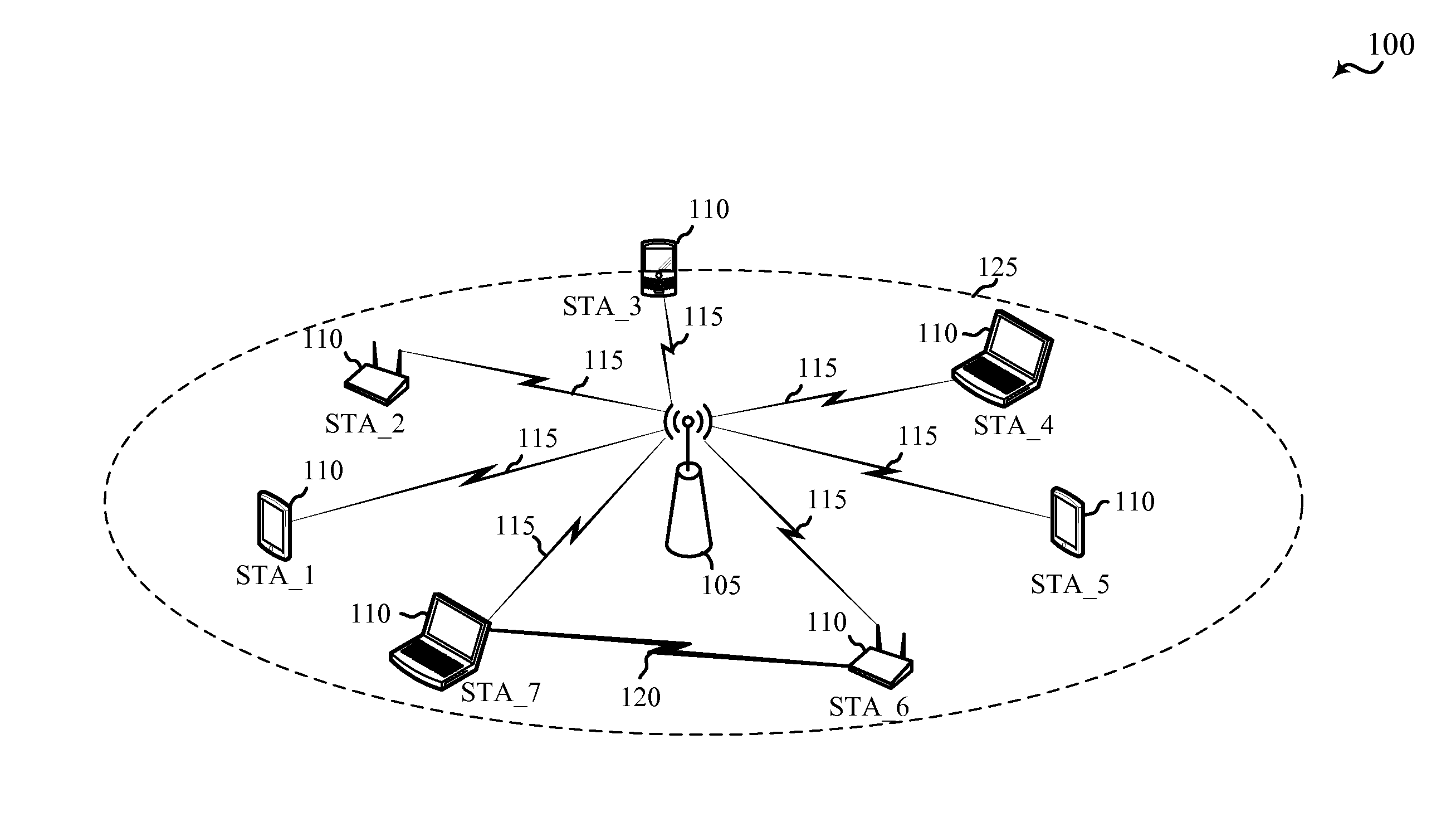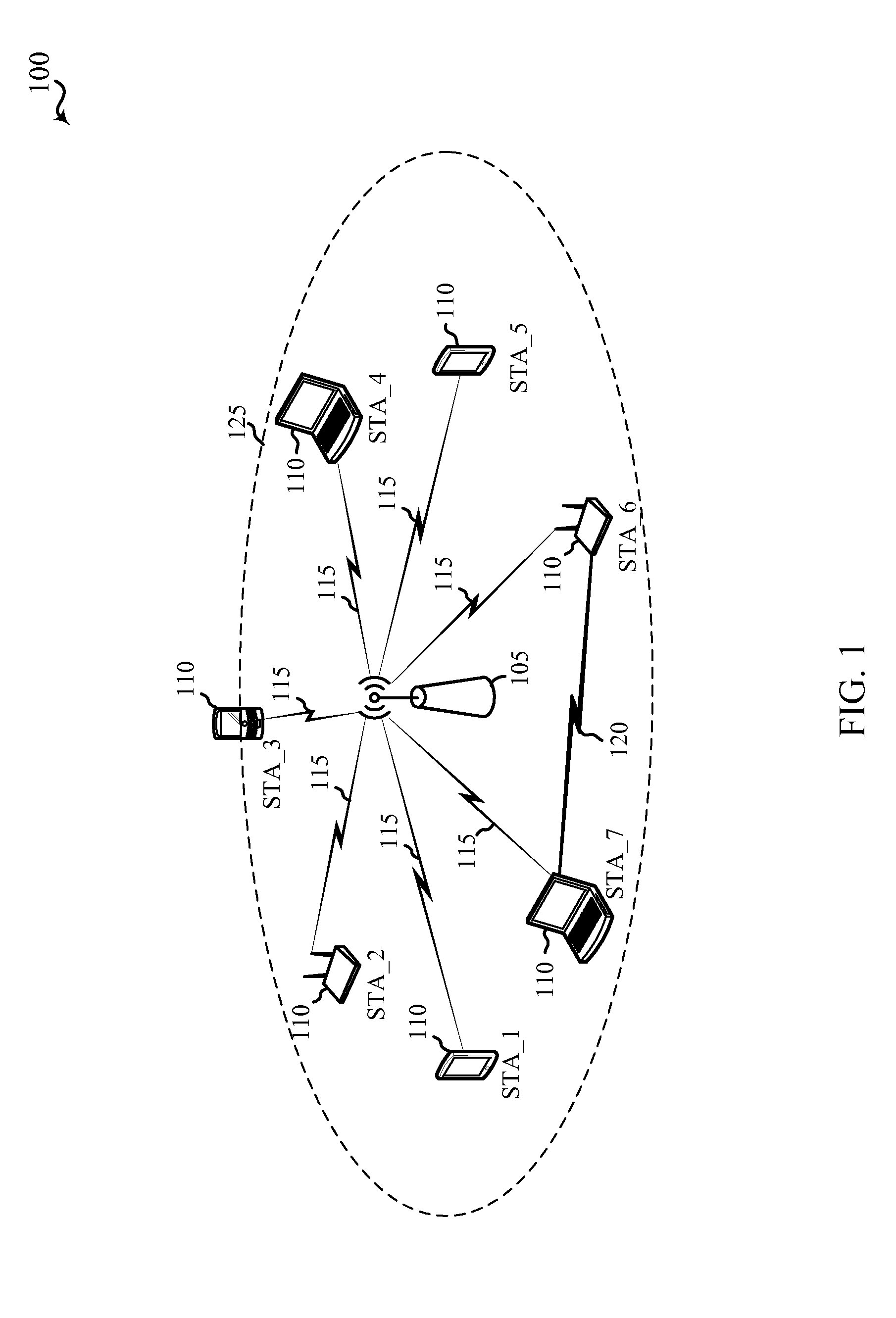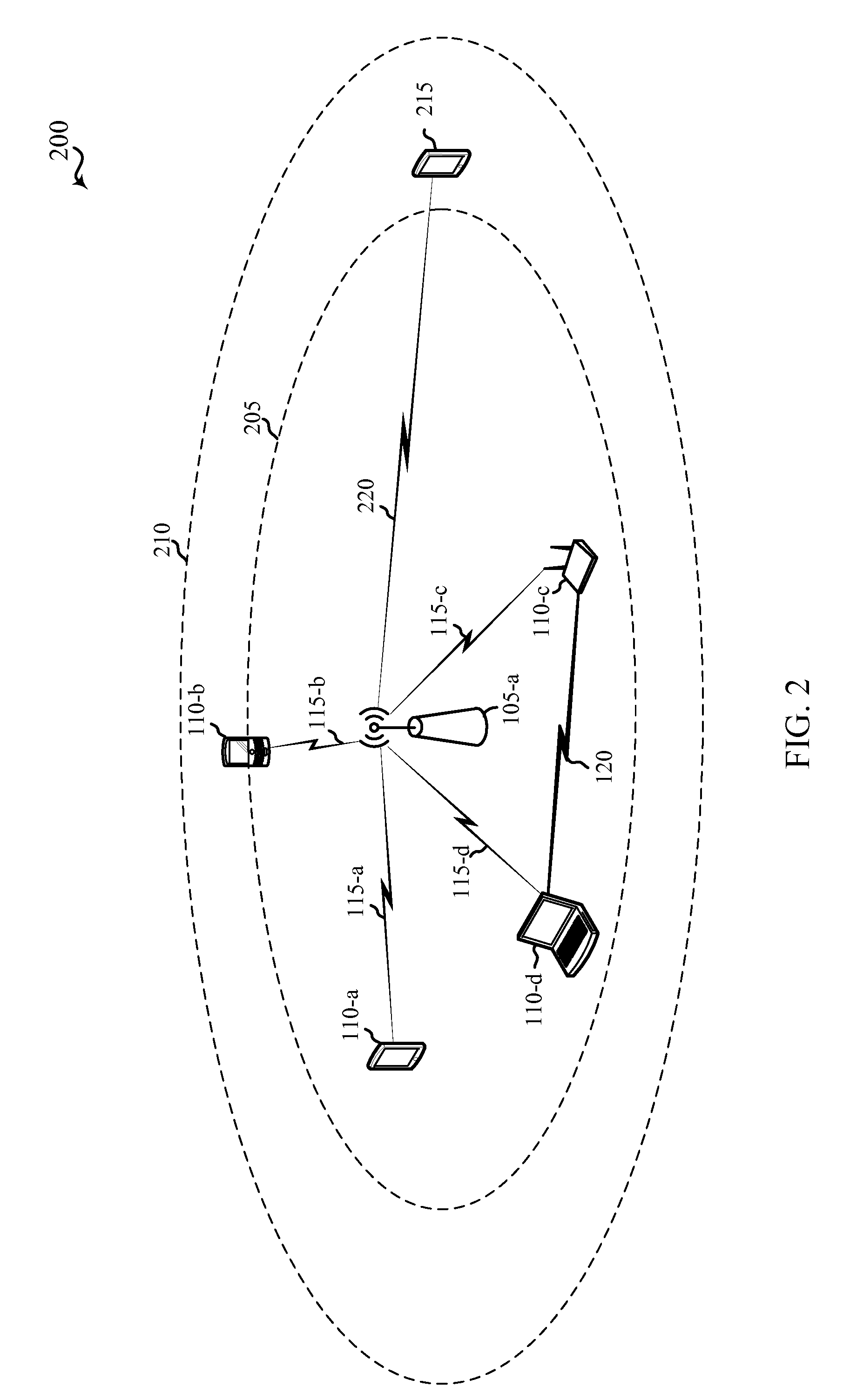Remote station protection
a remote station and protection technology, applied in the field of wireless communication, can solve the problems that the dsss sta may experience trouble in accessing the wlan served by the ap, and achieve the effect of reducing/eliminating the number of collisions
- Summary
- Abstract
- Description
- Claims
- Application Information
AI Technical Summary
Benefits of technology
Problems solved by technology
Method used
Image
Examples
Embodiment Construction
[0036]The described features generally relate to one or more improved systems, methods, or apparatuses for activating legacy protection based on receiving a Direct Sequence Spread Spectrum (DSSS) signal from a station (STA). An access point (AP) may receive a first DSSS signal from a STA, and based at least in part on the received first DSSS signal, activate legacy protection in the wireless local area network (WLAN) served by the AP. The AP may compare a received signal strength of the first DSSS signal to a threshold and activate legacy protection based on the comparison, e.g., if the received signal strength is less than a threshold, indicating that the STA is beyond Orthogonal Frequency Division Multiplexing (OFDM) communication or Clear Channel Assessment (CCA) range. In this way, the AP may not unnecessarily activate legacy protection, for instance, when a STA in OFDM range is communicating via DSSS or when no STA is outside of OFDM communication or CCA range. By enabling lega...
PUM
 Login to View More
Login to View More Abstract
Description
Claims
Application Information
 Login to View More
Login to View More - R&D
- Intellectual Property
- Life Sciences
- Materials
- Tech Scout
- Unparalleled Data Quality
- Higher Quality Content
- 60% Fewer Hallucinations
Browse by: Latest US Patents, China's latest patents, Technical Efficacy Thesaurus, Application Domain, Technology Topic, Popular Technical Reports.
© 2025 PatSnap. All rights reserved.Legal|Privacy policy|Modern Slavery Act Transparency Statement|Sitemap|About US| Contact US: help@patsnap.com



